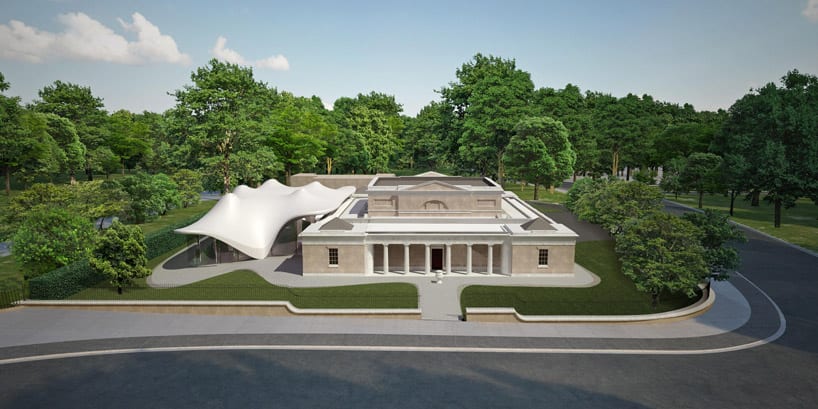
Visitor’s Guide to the REAL “Churchill’s London”
(Updated from 2016.)
Some years ago the Evening Standard offered Churchill’s “favourite spots in the capital.” We have seen these tourist guides before. In “The London Life of Winston Churchill” (16 June 2016), readers were invited to “browse the gallery above to find Churchill’s favourite London spots.”
The accompanying gallery offers a bottle of Pol Roger champagne, the National Liberal Club, a box of Romeo y Julieta cigars, a restaurant with a Churchill bar, Paxton & Whitfield’s cheese shop, Austin Reed’s menswear, and Brown’s Hotel. (“I don’t stay in hotels, I stay in Brown’s,” they claim he said, without attribution.)
With the exception of the National Liberal Club, this array would more aptly be entitled “Churchill’s household staff’s favourite shopping places.”
Sir Martin to the rescue
Happily, the real Churchill’s London, “Spinning Top of Memories,” was described long ago by his official biographer, the late Sir Martin Gilbert. The text is online. Here you may read “of Ungrand Places and Moments in Time.” These are locations genuinely crucial to the Churchill story.
It was the first Gilbert speech I’d heard, and I listened mesmerized, at both the intrigue and the great biographer’s command of detail. Here is the briefest review—which I hope will send you in to the full text. Better yet, seek out the illustrated booklet published at the time, on either Amazon or bookfinder.com. The places are still there. Some now have blue historical plaques, which were not affixed at the time.
12 Bolton Street
Young Winston’s first bachelor flat was furnished in part by his friend and mentor, Sir Ernest Cassel. That fact later caused Churchill trouble. After the Battle of Jutland, he was accused of making false statements about the result to enrich his Jewish benefactor, Cassel. It was all nonsense, of course. Churchill dispensed with it quickly. But the way he handled his accuser, Lord Alfred Douglas, and later forgave him on the outbreak of the Second World War, tell us much about Churchill’s magnanimity.
London Magazine, Hyde Park
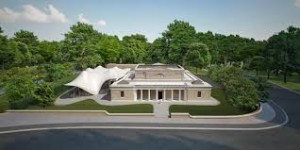 Recently refurbished as an up-market restaurant, this unassuming building near the Serpentine figured large in the Churchill saga. Sir Martin explained that in 1911, when war threatened with Germany over the Agadir Crisis, this was the munitions magazine for the defense of London:
Recently refurbished as an up-market restaurant, this unassuming building near the Serpentine figured large in the Churchill saga. Sir Martin explained that in 1911, when war threatened with Germany over the Agadir Crisis, this was the munitions magazine for the defense of London:
In his mind’s eye—and this was one of his great attributes—Churchill had immediately conjured up…the possibility of a small group of Germans, possibly German agents in London, seizing this magazine, and destroying it.
Churchill’s determined action in seeing it safely guarded was a key factor in convincing Prime Minister H.H. Asquith to give him a fighting department—the Admiralty—which he headed from 1911 to 1915. Thanks to his massive reforms and administrative reorganization, when war came “the Fleet was ready.”
Ho Chi Minh’s Veggies
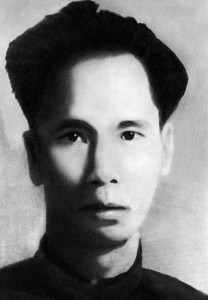
New Zealand House, the modern building at the bottom of Haymarket, is just a stand-in for the former Carlton Hotel—about which Sir Martin had an amazing tale. On one of the nights before war was declared, in August 1914, Churchill and Lloyd George dined here. And one of the cooks, or one of the waiters (accounts vary) was Ho Chi Minh!
“It’s true,” Sir Martin explained, “Ho Chi Minh had been in London as a vegetable cook on the outbreak of war, when he had gone to the French Embassy in London to volunteer his services to fight, as a patriotic Indo-Chinaman (as they were then called). He was turned down, crossed the Channel to Paris, and began his career of disgruntlement and revolution.”
I searched for the likely dates of the Churchill-Lloyd George dinner. It is unlikely to have been the night war was declared, August 4th. More likely it was on the 2nd or 3rd.) I tracked Ho’s activities at the time. The dates coincide perfectly.
Sir Martin never much indulged in the “what ifs” of history, but I coaxed a smile out of him with this one: Suppose on that fateful night, Churchill said to Lloyd George, “My dear David, these are the best string beans I’ve ever tasted. We must hire the cook and promote him to a head chef for the rest of his career.”
Admiralty House
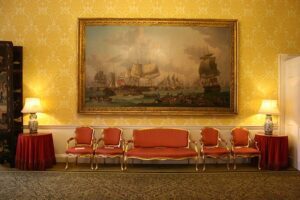
Its ultimate fate is uncertain nowadays, but the great building is still there, and features large in the saga. “Not only did Churchill write his great speeches of the early months of the First World War there, but also the first great speeches of the Second,” Sir Martin explained.
“Fight on the Beaches” was written in Admiralty House because, being a kind-hearted man underneath the gruff exterior, Churchill did not want to dislodge the sick and dying Neville Chamberlain precipitately from 10 Downing Street.
At the Admiralty, Gilbert continued, Churchill arranged some of the oak paneling to swivel open, displaying maps of all the oceans and the locations of all British ships. “The idea was that if someone came through the room, a well-meaning young naval officer, or, dare one imagine it, a politician, he could shut the panel and the naval dispositions would be hidden from view.”
Nearly a quarter century later, in September 1939, he returned to the Admiralty. He strode into the room. “He went up to the paneling and pulled it open. And there, exposed to view after twenty-four years, was the last of his maps, still bearing the fleet dispositions in May 1915.”
Charing Cross Hotel
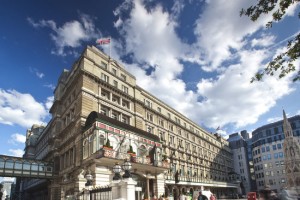
It’s a four-star Amba hotel now, but a century ago it was a down-at- the-heels backwater to which few paid attention. That made it ideal for Churchill’s First Sea Lord, Admiral Lord Fisher, to hide when he disappeared from the Admiralty in May 1915. Fisher was at loggerheads with Churchill over the Gallipoli campaign. His abrupt resignation caused the crisis that would dismiss Churchill from the Admiralty.
Ordered to return to duty “in the King’s name,” Fisher was nowhere to be found. Secretly, he had holed up at the Charing Cross Hotel, with close rail access to the south-of-England home of his lady friend, the Duchess of Hamilton. Sir Martin Gilbert explained:
Churchill, who was a shrewd person, many years later met the Duchess and told her: “If only I had known about your friendship with Fisher then, I would have gone to see you. You were the only one who could have persuaded him to go back to the Admiralty.” So have a look at this hotel, which was in a way so disastrous to Churchill’s fortunes.
41 Cromwell Road
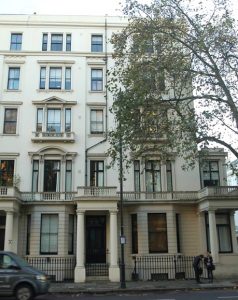
This large house just opposite the Natural History Museum belonged to Churchill’s brother Jack. From here, after deciding to leave the government in November 1915, Churchill departed for the trenches.
Through Autumn 1916, Cromwell Road housed both Churchill brothers, their wives and children, and their mother, Lady Randolph. Here Clementine Churchill received Winston’s long, plaintive, sometimes despairing letters from the front. Sir Martin drew attention to these “very private letters never intended for publication”….
“Twenty more yards to the left…”
It was 28 March 1916, a wintry day. The Germans were sending yet another methodical artillery barrage along the British front line. Churchill calculated that the fifth or sixth shell would hit the ground quite near to where he was standing. Indeed it did. As he wrote his wife:
“Twenty more yards to the left and no more tangles to unravel, no more anxieties to face, no more hatreds and injustices to encounter. A good ending to a chequered life. A final gift, unvalued, to an ungrateful country, an impoverishment of the war-making power of Britain which no one would ever know, or measure, or mourn.”
Metropole Building
In London, Sir Martin advised, one should visit places where Churchill found himself at important moments in history. One of these is the Metropole Building, where he served as Minister of Munitions in 1917-19. At the time it was requisitioned by the government. Here Churchill was looking out his window at Northumberland Avenue at the 11th hour of the 11th day of the 11th month of 1918, as Big Ben began to chime the hour that would signal the end of the First World War….
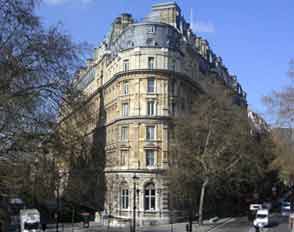
I looked at the broad street beneath me. It was deserted. From the portals of one of the large hotels absorbed by Government Departments darted the slight figure of a girl clerk, distractedly gesticulating while another stroke of Big Ben resounded.
Then from all sides men and women came scurrying into the street. Streams of people poured out of all the buildings. Northumberland Avenue was now crowded with people in hundreds, nay thousands, rushing hither and thither in a frantic manner, shouting and screaming with joy.
“Was this really the end?”
I could see that Trafalgar Square was already swarming. Around me in our very headquarters, in the Hotel Metropole, disorder had broken out. Doors banged. Feet clattered down corridors. Everyone rose from the desk and cast aside pen and paper. All bounds were broken. The tumult grew. It grew like a gale, but from all sides simultaneously. The street was now a seething mass of humanity. Flags appeared as if by magic. Streams of men and women flowed from the Embankment. They mingled with torrents pouring down the Strand on their way to acclaim the King. Almost before the last stroke of the clock had died away, the strict, war-straitened, regulated streets of London had become a triumphant pandemonium.
And Churchill wondered as he stood there: Was this really the end? Or was it merely another chapter in a “cruel and senseless story? Will a new generation in their turn be immolated to square the black accounts of Teuton and Gaul?” We now know the answer.
11 Morpeth Mansions
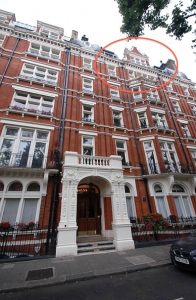
Not part of Sir Martin’s talk, though he spoke of it on other occasions, was Morpeth Mansions. A flat here was the London home of Winston and Clementine Churchill from late autumn 1931 until war in September 1939.
It is hard to exaggerate the historic importance of this residence. (And it does have a historical plaque.) Here Churchill kept made surreptitious rendezvous with informants who, at risk of their careers, gave him secret reports on German rearmament. With these he urged the government to rearm. The government did respond, but insufficiently.
Morpeth Mansions frequently saw meetings of The Focus: distinguished citizens opposed to appeasement, hoping to ward off conflict through preparedness—frustrated, in the end, by a reluctant government. Here Churchill and his colleagues gathered as Prime Minister Neville Chamberlain had left for Bad Godesberg to meet Hitler on 22 September 1938, a preliminary to the Munich Agreement.
“It is the end of the British Empire”
Harold Nicolson, the last to arrive, was waiting for the lift when Churchill paid his cabbie and hurried in. They ascended together. Nicolson said: “This is hell.” Churchill muttered: “It is the end of the British Empire.”
According to Nicolson’s diary, Churchill told The Focus that the Cabinet had demanded “a firm stand,” insisting on German demobilization, supervision of the Sudetenland transfer to Germany by an international commission, refusal to discuss Polish or Hungarian claims on Czech territory, and a German guarantee of Czech borders. William Manchester wrote:
Almost in chorus, his guests said: “But Hitler will never accept such terms!” Winston replied, “In that case, Chamberlain will return tonight and we shall have war.” In that event, one peer pointed out, “It will be inconvenient having our Prime Minister in German territory.” Winston shook his massive head and growled, “Even the Germans would not be so stupid as to deprive us of our beloved Prime Minister.”
As we know, war was averted. After a final meeting with Hitler at Munich, the Prime Minister returned promising “peace for our time.” The peace lasted less than a year.
Number Ten Annexe
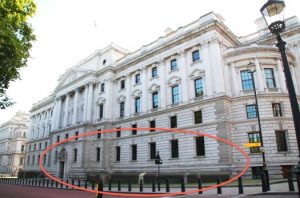
Many have visited the Cabinet War Rooms, the underground London bunker, now a museum, designed to shelter the government during the Blitz. But Martin Gilbert directed us to walk across the street to St. James’s Park and then look back:
Cast your eye from the entrance on the War Rooms slightly to the right. You’ll see a doorway well above ground. To the right of that doorway you will see a set of six windows ending in a curved window at Storey’s Gate. Those are the actual rooms in which Winston Churchill slept and worked during the second World War.
Prosaic, perhaps, next to the iconic War Rooms—and he deeply disliked the place. Sir Martin continued:
He said he felt “like a rat in a hole.” He spent, it seems, only three nights there in the 1562 nights of the war. These unassuming ground floor rooms were the center of the war effort. Churchill was at the Annexe when he did not slip back, as he often did, to 10 Downing Street itself, where most of the Cabinets were held. If you look closely you will even see the holes where the metal shutters were affixed. Churchill did not want, after all, to be blasted out of his rooms, so the shutters were there to be closed during the bombing.
Number Ten Annexe is of course valuable real estate nowadays, too valuable for a museum. But from those above-ground rooms came many of Churchill’s great speeches, directives and decisions. Next time you go by, have a look at them. Please tell me if there is a blue historic plaque. Last time I checked, it still wasn’t there.







One thought on “Visitor’s Guide to the REAL “Churchill’s London””
Kepp up the good work. Great stuff.
Comments are closed.